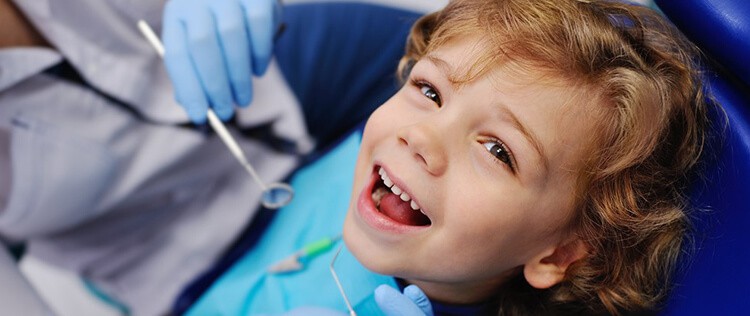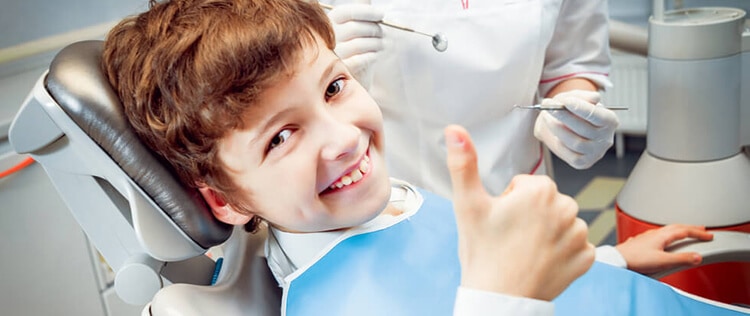Oral care and dental health in children starts when the baby is still in the mother’s womb.If the mother paid attention to her nutrition during pregnancy and especially consumed calcium-rich foods, her child’s teeth and gums will be healthy.
-
• How are babies’ oral care done?
Babies teeth between 6-12 months on average. Teeth should be cleaned as soon as they emerge. We observe that babies are neglected by their parents, with the thought that their first teeth will fall out anyway. However, it is necessary to take care of the dental health of babies as much as adult dental health. It is necessary to ensure the oral hygiene of the baby. After feeding, the baby can be cleaned by gently rubbing the teeth with a clean damp piece of cheesecloth or a soft porous cloth. You can also clean their teeth with a silicone finger brush prepared for babies.
-
• How can parents teach their children to brush their teeth?
It is necessary to prepare the ground for the habit of holding the toothbrush and turning it in the mouth. It would be appropriate for parents to give their babies a toothbrush after the age of one. The baby holding the spoon can also hold the brush. This physical skill should be gained by giving the baby the opportunity to do so.
-
• What can be done to reinforce the tooth brushing habit?
Children who enjoy imitating adults and learn in this way are also very curious about toothpaste. However, it is not appropriate for a child to use toothpaste before the age of two. After the age of two, a pea-sized amount of toothpaste can be applied to the brush at most. The toothpastes we use are not suitable for use by children due to the fluoride they contain. You can find fluoride-free children’s toothpastes in the market, in pharmacies and large supermarkets. In addition, by asking him to show his teeth as he brushes, praising the dental hygiene of the child showing his teeth, saying that he does this job well will reinforce the child’s behavior. Stand in front of the bathroom mirror and brush your teeth together, then show your teeth to each other, smile. The child’s teeth will be healthy if the baby is born healthy with the healthy habits of its parents before it is born, if the parent supports the baby and gives him the ability to brush his teeth early, and if they help him reinforce this habit with his actions. Even if there is no health problem, children should be examined by an ophthalmologist at the age of two, and it is necessary for children to be examined by a pedodontist and an orthodontist when they reach the age of two, in order to prevent future health problems. Again, even if no health problems are observed in children, it would be beneficial for preventive treatment to be examined by a pediatric dentist and an orthodontist in the 6-7 age range.
-
• What happens when Oral and Dental Health in Children is Neglected?
It is necessary to prepare the ground for the habit of holding and turning the toothbrush in the mouth. It would be appropriate for parents to give toothbrushes to their babies after one year of age. The baby holding the spoon can also hold the brush. This physical skill should be taught by giving the baby the opportunity to do so.
Teeth – Health problems will arise when children do not pay due attention to oral and dental hygiene. Especially if the child frequently consumes unhealthy snacks such as candy and chocolate, the decay of the teeth will accelerate. As a result, the teeth may fall out prematurely or decay and leave the mouth prematurely. Fallen and decayed teeth create a cavity in the mouth. The mouth structure takes action to fill the cavities and to use the teeth functionally. The gaps of the fallen teeth are closed by the movement of the neighboring teeth into the gaps. There is no room left for permanent teeth that will come later. Teeth that are expected to come out later may remain impacted in the palate. It may turn out uneven due to space constraint. Scattered, uneven, or missing tooth alignment occurs in the mouth.
Jaw – In addition, gaps in the mouth prevent the jaw from reaching the required width. When the jaw is narrow, the teeth that come out in later ages may not fit in the jaw and overlap. Teeth can be cramped and crooked. This causes orthodontic problems beginning in childhood. Therefore, it is important to invest in oral and dental health from a young age.


